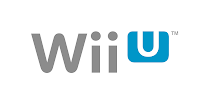You can download it from
http://windows.microsoft.com/en-US/windows-8/download.
Windows 8. It sounds so innocent.
The name of Microsoft's coming operating system, updated today to Windows 8 Release Preview, implies just another version of an OS once much loved and now much maligned. But Windows 8 means much more to Microsoft: It's a bold attempt to build an Apple-proof operating system with modern visual elements via the risky Metro design language. It's a salvo in the war for tablet relevance. It insists that touch screens matter, and it sets the stage for upcoming versions of Windows Mobile.
For Microsoft to succeed with Windows on all platforms, Windows 8 has to work. The changes in today's Release Preview take a step in the right direction, tightening up the operating system and introducing new apps to showcase just what Windows 8 can do. But Microsoft isn't there yet. This is more "beta two" than "release candidate."
It's true that the Windows 8 Release Preview has a lot going for it, and people are curious. Microsoft says the Windows 8 Consumer Preview, which debuted at Mobile World Congress in February, is "the most tested Microsoft operating system of all time," with more than 1 million downloads during its first 24 hours of public availability. It's tricked out with social networking and synchronization, it's robust enough to handle monster suites like Adobe's, it gracefully moves from touch to keyboard and mouse, and it's got some top-notch security. What you'll find in the Release Preview is a stable, fast operating system that's ready to compete, but a selection of default apps that are far from complete.
You can get the Windows 8 Release Preview from Microsoft's site, or CNET Download.com. Microsoft has revealed the Windows 8 upgrade plan for Windows 7 computers purchased after June 2.
What's new: Multitouch touch pad
One of the big new features is that Windows 8 will allow multitouch gestures on touch pads. Macs have had multitouch touch-pad drivers for a few years, while Windows touch pads haven't progressed much since Windows XP. The blame for that can sit at the feet of Microsoft just as easily as you can point a finger at the hardware manufacturers. The point is now, with Windows 8 forcing dramatic hardware upgrades to accompany it, Windows touch pads are finally moving forward.
Three default gestures will come with all laptops that have touch pads: pinch-to-zoom, two-finger scroll along the X and Y axes, and edge swiping. That last one is important because it will give you an easier way to activate the edges on non-touch-screen Windows 8 computers besides using the mouse.
Jensen Harris, Director of Program Management for the User Experience team at Microsoft, told CNET that Microsoft is working with hardware manufacturers to build specialized mice that also support the features, most likely for desktop Windows 8 computers that don't come with touch screens or for people doing at-home upgrades on non-touch screens.
When Windows 8 is finalized, Harris said that you'll be able set swiping in from the left edge to bring up the last viewed app, as it is on a touch screen, or for the Start screen button with thumbnails of the last viewed app, which on the touch screen is swiping in then back out from the left edge.
In two days' worth of use, the touch pad never failed when using its new features on the Start screen or Desktop mode. However, it was far less stable in apps, and often ignored pinch-to-zoom and two-finger scroll. Since it worked well on the Start screen and in other Windows 8 screens like the settings window, it looks like the apps are still quite rough.
Harris also said that he expects the development of the default apps to be an ongoing process. Like mobile apps on iOS and Android, they will see continuous revision, up to and beyond the release of Windows 8.


















































